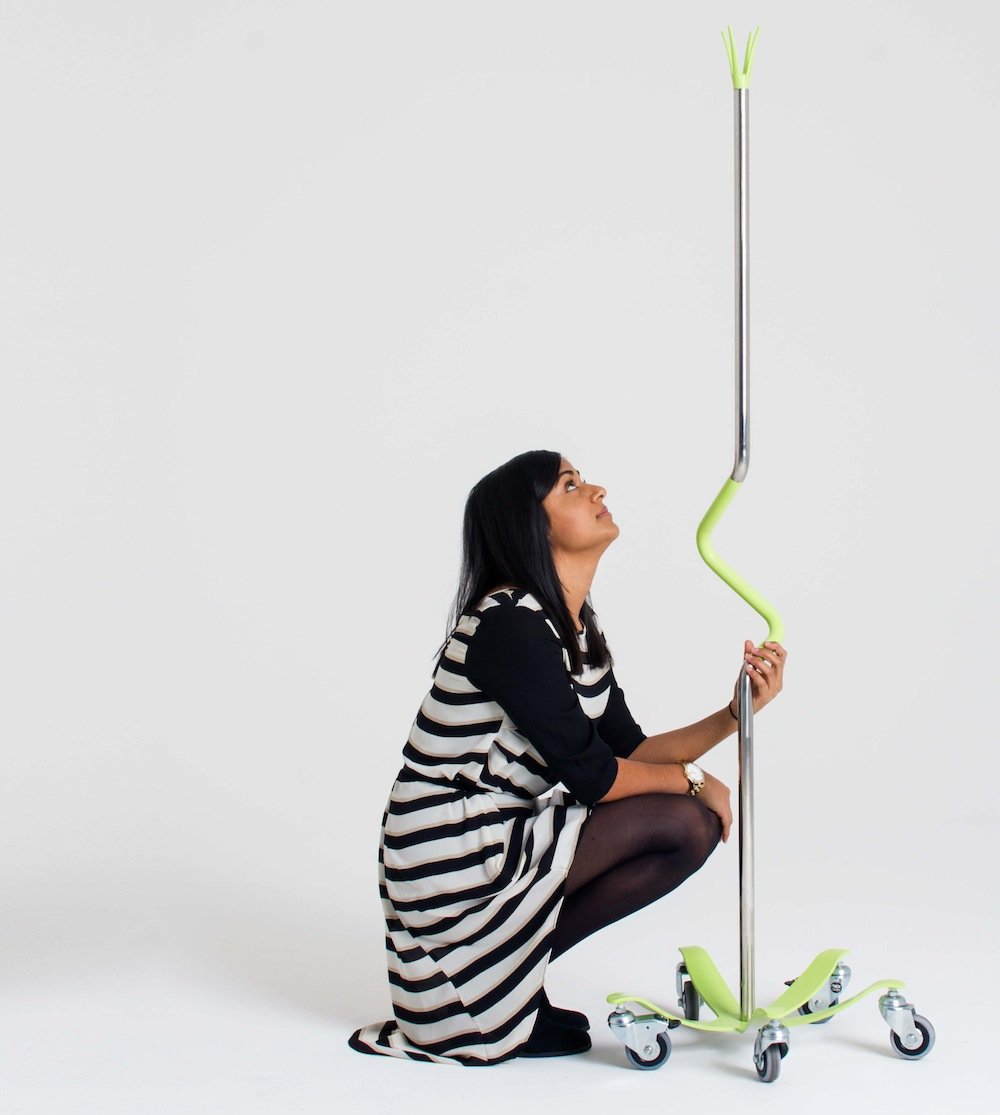Roly poly: Designer creates a child-friendly IV pole

At 14 months old, Neerali Parbhu was in and out of Auckland’s Starship Children’s Hospital for treatment of a cancerous germ cell tumour. Two decades later she still walks Starship’s bright pastel corridors, but with a very different purpose.
The 22-year-old product design student at AUT’s School of Art and Design is planning the first hospital trials for her new child-friendly IV Pole.
As a toddler, she says she hated the conventional, bland, push-along poles, hung with their intravenous fluid bags, and her reaction made life particularly tough for her mother. “I’d run around the hospital and my mum would be chasing me with it because I didn’t like it, it wasn’t a toy and it was ugly,” says Neerali.

Central to Neerali’s project is working with children and families, and developing a child-focussed medical product that concentrates on more than just practical improvement. “I talked to nurses up at the hospital and they also had a lot of issues with the standard IV pole and I began to understand that kids weren’t emotionally attached to it, even though they were physically attached to it.”
Neerali began the process by making concepts and “sounding out” manufacturers to see if her ideas could actually be produced. Once a prototype was done, she approached the Starship Foundation to get much-needed funding.
That Starship collaboration also gave Neerali a wealth of experience and information from front-line health practitioners, she says. “Once we got funding, it started the new stage of my project into actually developing these for Starship.”
The first batch of “Sprout” IV poles got positive feedback from staff and children in a simulated hospital environment. The new pole was easier to manoeuvre and less bulky for children, the users said. But the new phase also brought a fresh set of challenges for Neerali in re-design, ethics, intellectual property and relationship management.
The first prototype had a circular platform, which Neerali saw as a space for children to put their toys on. But nurses worried children would use it to ride on – a skateboard with a pole – making it a significant safety hazard. She went back to the drawing board and instead designed five curved legs.

Other child-friendly features of the Sprout IV Pole include the quirky bended handle, which replaces the plastic attachments on a conventional stand. The kink makes it easier for kids to push, and the colours make it less clinical.
The Sprout can be “fun as well as functional”, Neerali says.
The name Sprout is inspired from the top of the pole, which has four tips which “‘sprout” into the air, and are used for hanging the drip bags. “Originally, old IV poles were quite unstable, the second it tips the weight is unevenly distributed so it sways more. The sprouts at the top of my design centralise the weight,” she says.

Developing her own product has also seen Neerali have to come to grips with the problems of intellectual property protection. She has been careful never to show the whole design to anyone, in case they steal the ideas. “You have to be so careful to protect your designs – and to be seen to protect them. Any manufacturer that I show my designs to, I need to make sure that they are aware I’ve protected my design and if they try to make it they are infringing my [IP] registration.”
Dr Richard Aickin, director of child health at Starship, says well-designed equipment like the Sprout pole delivers a better experience for children while still meeting the hospital’s clinical needs. “We know that the hospital environment plays a big part in the experience of children who need to come here. We expect that the Sprout IV Pole will reduce stress and add a more playful feel to children’s immediate surroundings in hospital.”
Neerali will trial the improved design at Starship during September, once she gets the green light from the Auckland Hospital Research Office.
?Idealog magazine’s Emerging Talent section combines a great story about new talents and technologies, with words and photos by an emerging writer and photographer. In this case, the article was written by AUT student journalist Matt Ogilvie with photographs taken by AUT graphic design student Annaliesa Tran.




